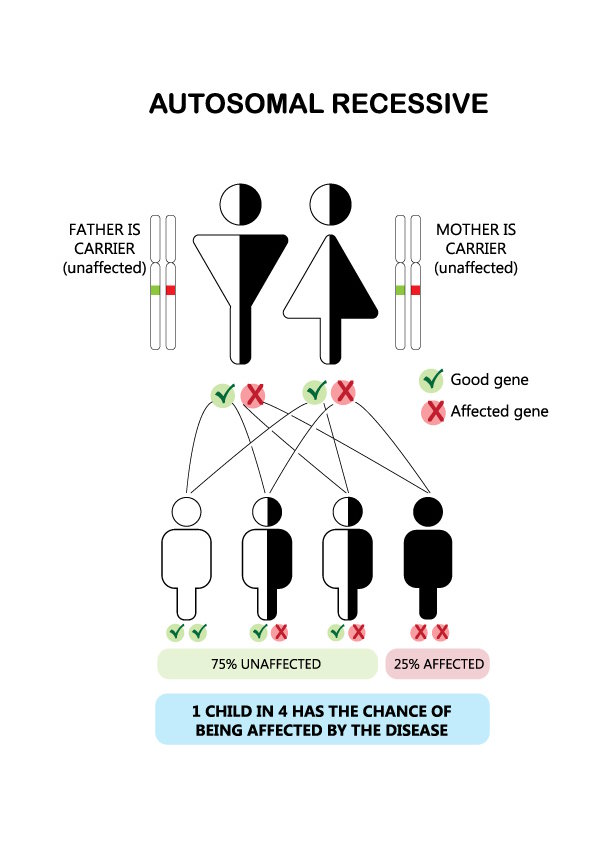


Fanconi Anemia (FA) is an inherited anemia that affects all cells in the body, including the three cells found in normal blood: red blood cells, white blood cells, and platelets. It is classified as an inherited bone marrow failure syndrome. FA occurs in approximately 1 in 130,000 individuals worldwide and is found equally in both sexes. This condition is more common among people of Ashkenazi Jewish descent, the Roma population of Spain, and Black South Africans.
The disorder is caused by an autosomal recessive pattern of inheritance meaning that both parents must carry and pass on the recessive genes for a child to be affected.

The patient usually has a condition called pancytopenia, low counts of all three cell types. It also affects other cells throughout the body, due to the inability of cells to repair themselves after ongoing, normally occurring DNA breaks and damage. A bone marrow sample will show that most maturing blood cells in the bone marrow have been replaced with fat.
Patients with FA may have some of these symptoms:
Fanconi anemia may also result in other genetic defects, including physical characteristics like missing or malformed thumbs, fingers, or forearms, and some internal organ anomalies.
FA can lead to bone marrow failure, acute myeloid leukemia, aplastic anemia, myelodysplastic syndrome, solid tumors, and developmental abnormalities.
Of those afflicted by FA, the average age of diagnosis is 7 years old, and the average lifespan is 20 to 30 years, but patients with less severe disease can live into their 40s and 50s.
Blood transfusions are the best form of supportive therapy for patients with FA, but many patients die from complications of the disease.
Blood stem cell or marrow transplants are a more definitive treatment and can lead to a cure of the lower blood cell counts in up to 75% of patients who undergo the procedure. By replacing the diseased marrow with healthy tissue through a stem cell or marrow transplant, the production of a healthy level of fully functioning blood cells can be achieved.
Gene therapies may soon be developed that will help many patients in the future.
For the transplant to work, the donor and the patient must have matching immune system factors, called Human Leukocyte Antigens (HLA). People get their HLA types from their parents, one half from each parent, similar to how we inherit hair and eye color. Only about 30% of patients can find a match with another family member; the other 70% of patients must search the registry for an unrelated donor. People with the same genetic heritage have the best chance of being HLA matches, due to the way these factors are inherited.
Since the only cure for FA is a stem cell or bone marrow transplant, the best way to help is by joining the registry so more donors are available. Anyone 18 to 35 years old and in general good health can join the registry by completing a cheek swab kit at an in-person drive or by ordering a kit to have sent to your home.
Gift of Life is always seeking volunteers to help with a wide range of activities, including running donor recruitment tables at various events, making presentations about joining the registry, helping during fundraising events, and more. Student volunteers can earn community service hours. To get started, visit our Volunteer Network page.